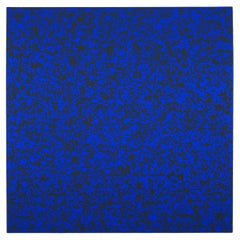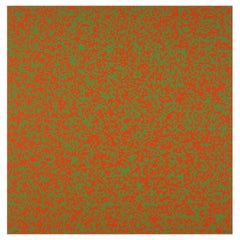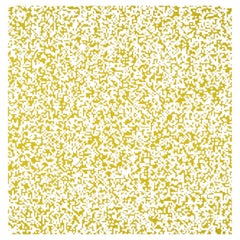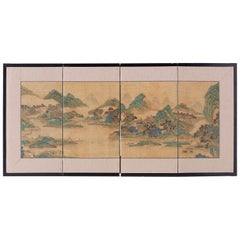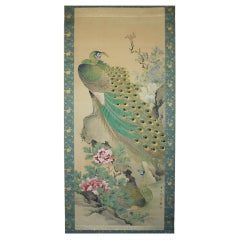Francois Morellet Paintings and Screens
Self-taught French artist Francois Morellet was a man ahead of his time. Because he was quietly working away in his hometown, his abstract paintings, prints, sculptures and installations didn't garner much attention until later in his life. But once they did, Morellet's use of geometry, neon lighting and kinetic potential was on trend with the day’s contemporary art sensibilities and his work would be associated with Conceptualism as well as Op art, which saw artists producing intense visual experiences by drawing on and evolving methods developed by movements such as Abstract Expressionism and Impressionism.
Morellet was born in Cholet, France, which he called home for his entire life. While he left briefly to study literature in Paris, he returned to head his family's toy factory. Running a successful business gave Morellet the time and opportunity to focus on his art.
He began creating figurative paintings in the 1940s but pivoted to abstraction in the 1950s. His inspiration included the work of architect and designer Max Bill, which he encountered on a trip to Brazil, and the decorative Islamic art he saw in Alhambra, Spain.
In the early 1960s, Morellet became a founding member of the collaborative artists collective Groupe de Recherche d’Art Visuel (GRAV). The experimental group created dynamic art that required the viewer's active engagement. In 1964, GRAV exhibited at Documenta in Kassel, Germany, where Morellet went on to appear twice as a solo artist.
Morellet had his first showing to American audiences in 1965 at the Museum of Modern Art, in New York, followed by an exhibition at the Venice Biennale in 1970. He exhibited around the world for the rest of his career, always returning to Cholet.
In 1991, as part of a collection for Tecno curated by Valeria Borsani in part to pay tribute to her father, celebrated iconic designer and Tecno founder Osvaldo Borsani, Morellet collaborated with his eldest son, Frédéric, to create the brand’s Détabilisation tables. These sculptural minimalist furnishings are made of glass, painted cast aluminum and satin-finished stainless steel and look as though they’re going to collapse at any moment.
A prolific artist throughout his life, Morellet celebrated his 90th birthday on April 30, 2016, by launching a string of shows in London and Brazil. While planning those exhibitions, he told Wallpaper magazine: "I often said that in the past, I considered that my work was widely underestimated and that today it is probably overestimated."
Morellet passed away in May of that year, doing what he loved. Today, his work is held in the collections at the Centre Pompidou, the Museum of Modern Art, the Seoul Museum of Art, the Kunsthaus Zurich and many more prestigious institutions.
On 1stDibs, find Francois Morellet prints, paintings, mixed media and more.
20th Century Francois Morellet Paintings and Screens
Paper
20th Century Francois Morellet Paintings and Screens
Paper
20th Century Francois Morellet Paintings and Screens
Paper
19th Century Japanese Edo Antique Francois Morellet Paintings and Screens
Brass
Mid-19th Century Japanese Antique Francois Morellet Paintings and Screens
Silk
Early 20th Century Japanese Japonisme Francois Morellet Paintings and Screens
Gold Leaf
2010s Japanese Modern Francois Morellet Paintings and Screens
Linen
2010s Nepalese Tibetan Francois Morellet Paintings and Screens
Brocade, Wood, Paint, Paper
18th Century Japanese Edo Antique Francois Morellet Paintings and Screens
Gold Leaf
2010s Japanese Modern Francois Morellet Paintings and Screens
Linen
1930s Japanese Modern Vintage Francois Morellet Paintings and Screens
Canvas, Paint
2010s Asian Modern Francois Morellet Paintings and Screens
Linen
19th Century Japanese Meiji Antique Francois Morellet Paintings and Screens
Paper
2010s Japanese Modern Francois Morellet Paintings and Screens
Linen
Early 20th Century Japanese Meiji Francois Morellet Paintings and Screens
Iron
